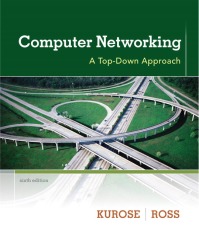We believe one important reason for our book’s popularity is that each new edition offers a fresh and timely approach to computer networking instruction. Since the Fifth Edition, released in 2009, the field of computer networking has continued to evolve, with new advances taking places in all five layers, as well in network security and in management. Jim and I felt that a new edition was greatly in need to capture all these recent developments.
The changes and additions in the Sixth Edition are quite substantial, more so than in other recent editions of our textbook. Jim and I are really excited about these changes, and we think you will be too. Some of the more notable changes are:
-
In Chapter 1, the treatment of access networks has been modernized, and the description of the Internet ISP ecosystem has been substantially revised, accounting for the recent emergence of private content provider networks, such as Google’s. The presentation of packet switching and circuit switching has also been reorganized, providing a more topical rather than historical orientation.
-
In Chapter 2, Python has replaced Java for the presentation of socket programming. While still explicitly exposing the key ideas behind the socket API, Python code is easier to understand for the novice programmer. Moreover, unlike Java, Python provides access to raw sockets, enabling students to build a larger variety of network applications. As always, when material is retired from the book, such as Java-based socket programming material, it remains available on the book’s Companion Web site.
-
The Java-based socket programming labs have been replaced with corresponding Python labs, and a new Python-based ICMP Ping lab has been added.
-
In Chapter 3, the presentation of one of the reliable data transfer protocols has been simplified and a new sidebar on TCP splitting, commonly used to optimize the performance of cloud services, has been added.
-
In Chapter 4, the section on router architectures has been significantly updated, reflecting recent developments and practices in the field. Several new integrative sidebars involving DNS, BGP, and OSPF are included.
-
Chapter 5 has been reorganized and streamlined in a big way, accounting for the ubiquity of switched Ethernet in local area networks and the consequent increased use of Ethernet in point-to-point scenarios. Also, we have added a new section on data center networking, an important and hot topic in networking research today.
-
Chapter 6 has been updated to reflect recent advances in wireless networks, particularly cellular data networks and 4G services and architecture.
-
Chapter 7, which focuses on multimedia networking, has gone through a major revision. The chapter now includes an in-depth discussion of streaming video, including adaptive streaming, and an entirely new and modernized discussion of CDNs. A newly added section describes the Netflix, YouTube, and Kankan video streaming systems.
- Many new homework problems have been added, and many of the existing problems have been revised.
-
The Companion Web site will be significantly expanded and enriched to include VideoNotes and interactive exercises.
Of course one other big change is the textbook cover (and corresponding logos). In each of the previous five editions, the textbook displayed a bridge on its cover. In this edition, we are instead using a cloverleaf, which should evoke routers, switches, or Internet exchange points for most of you. The cars on the cloverleaf, of course, represent packets!
In future blog postings, we will discuss many of these changes in greater detail. Feel free to comment to this or other posts – we greatly appreciate your feeback!
Keith


